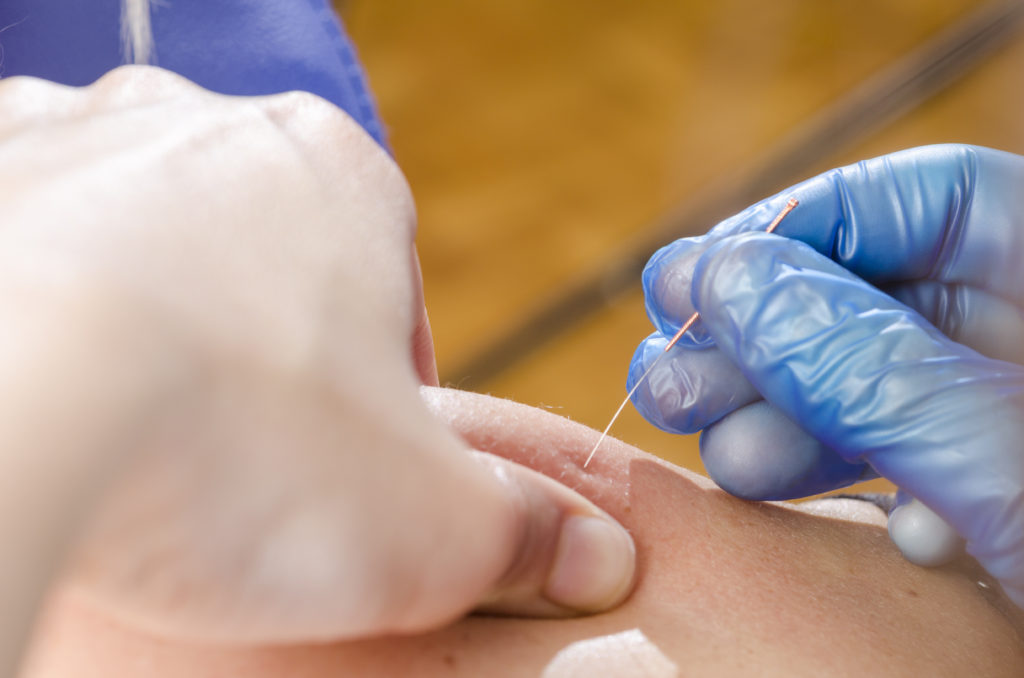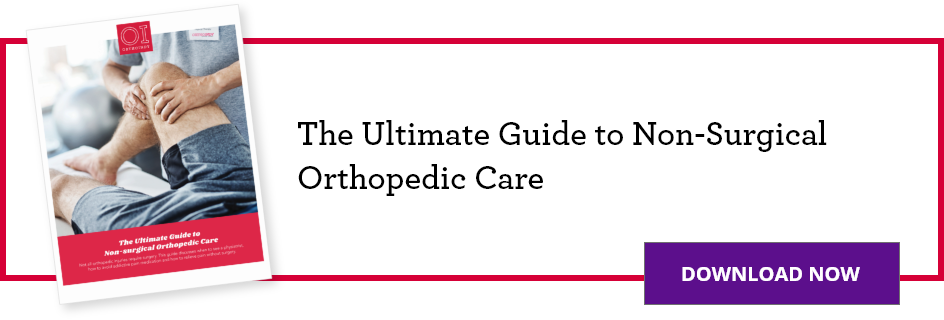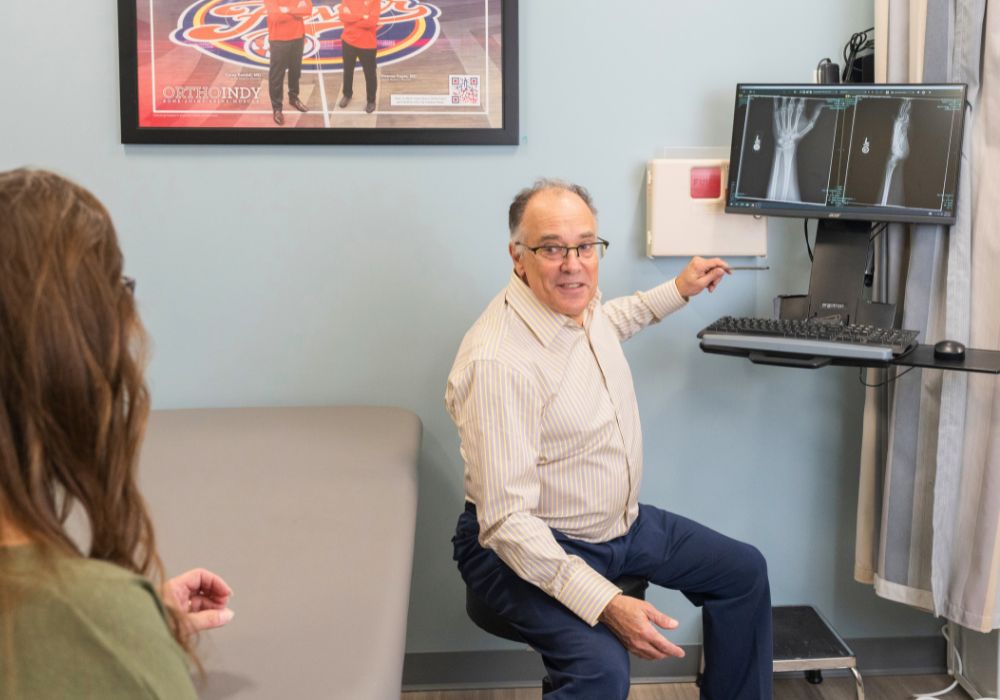THIS POST IS PART OF THE ULTIMATE GUIDE TO NON-SURGICAL ORTHOPEDIC CARE
Dry needling physcial therapy is a highly effective form of physical therapy for the treatment of a multitude of musculoskeletal and neuromuscular conditions. However, it is not appropriate for all conditions and the use of the technique will be at the discretion of your physical therapist.
“We are constantly looking to add new, innovative and effective treatment options for our patients dealing with pain and musculoskeletal injuries. We are very happy to now be able to offer dry needling at OrthoIndy Physical Therapy,” said Jeff Sorg, Director of OrthoIndy Physical Therapy. “The treatment is gaining popularity due to its ability to often achieve immediate positive results, with decreased pain and improved movement and function.”
How does dry needle therapy work?
Dry needle physical therapy is not acupuncture (traditional Chinese medicine), it is based on neuroanatomy and modern scientific studies of the musculoskeletal and neuromuscular systems. A very fine filament needle is inserted through the skin and into the deeper tissues that are considered trigger points to your pain.
The treatment works by causing a small lesion within the muscle tissue and surrounding soft tissues which creates a chemical and neurological response, allowing the muscle to relax. This then creates a local healing response, thus reducing pain and restoring range of motion and movement. Conditions that respond well include athletic and overuse injuries, tendonitis, chronic neck and back pain, headaches and post-surgical pain.
What conditions can be treated?
Conditions include, but are not limited to neck, back, shoulder pain, arm pain (tennis elbow, carpal tunnel, golfer’s elbow), headache to include migraines and tension-type headaches, jaw pain, buttock pain and leg pain (sciatica, hamstring strains, calf tightness/spasms).
Is the procedure painful?
The fine filament needle is very thin, solid and flexible, which allows the needle to be pushed through the skin versus cutting the skin. This helps reduce any discomfort that may occur with the procedure. At OrthoIndy, we strive to make the treatment virtually painless; however, at times a local twitch response of the muscle may be felt. When the needle is inserted into the pathological tissue the local twitch response sensation is normal and is felt only momentarily. These sensations are perfectly normal and even a desirable response. Your therapist will make every effort to make your experience comfortable and therapeutic.
What are the risks?
Though unlikely and rare, there are risks associated with this treatment. The most serious risk is the accidental puncture of a lung (pneumothorax). If this were to occur, it may likely only require a chest X-ray and no further treatment. The symptoms of shortness of breath may last for several days to weeks. A more severe lung puncture can require hospitalization and re-inflation of the lung. This is a rare complication and should not be a concern.
Other risks may include bruising, infection and nerve injury. Please notify your therapist if you have any conditions that can be transferred by blood. Bruising is a common occurrence and should not be a concern unless you are taking a blood thinner. As the needles are very small and do not have a cutting edge, the likelihood of any significant tissue trauma is unlikely.
How will I feel after the treatment?
This will vary but many patients experience immediate relief of their symptoms and an increase in range of motion. Soreness can also be a common response from the needling but does not occur with all people. Some individuals may experience an immediate achiness or a delayed soreness the next day. The soreness, if present, will usually last one to two days, use of heat and light massage and movement will be beneficial. Mild bruising may occur at the needling sites and is more prevalent in certain parts of the body. Larger bruising may also occur, but is rare. Application of ice on the bruise will help with the soreness and skin discoloration will last several days, but is not harmful.
It is uncommon, but possible, that the treatment may temporarily increase your symptoms. This is not unusual but if this continues past the one to two day window, inform your therapist to allow adjustment of your program to enhance your comfort the next time. This does not mean that dry needle therapy will not be beneficial to your condition.
Will I continue to do exercises or receive other treatments?
Yes, at the discretion and under the instruction of your therapist, your program may also incorporate traditional physical therapy interventions including manual therapy, therapeutic exercises, endurance training, core stabilization and postural training.
How many treatments will I need?
This will depend on the category you fit in, which is determined by the state of your injury and your overall health. Remember we are attempting to cause mechanical and biomechanical changes without any pharmacological means. Therefore, we are looking for a cumulative response to break the pain cycle. Your therapist will be able to give you more insight after your evaluation.
What should/can I do after treatment, what should I avoid?
Our recommendations vary depending on the amount of soreness you experience after treatment. Recommendations may include increasing your water intake, applying heat or ice over the area, gentle stretches and modifications of activities.
Is dry needling physical therapy treatment covered by insurance?
No, insurance plans, including Medicare consider it experimental and therefore it is not covered, and does not have a unique procedural code. For this reason, billing for dry needle therapy at our facility, is billed separately from traditional therapy, and the patient will be responsible for providing payment on the same day of the service. At therapist discretion, you may also receive traditional therapy interventions, mentioned previously, and those interventions would be billed through your insurance plan.
How much does dry needling cost at OrthoIndy Outpatient Therapy?
Dry needling is offered for $30 a session. Dry needling is offered as a service in conjunction with physical or occupational therapy.
Our therapists have all been certified and received advanced training to be able to perform this treatment.
Dry needle therapy is currently available at all six OrthoIndy Physical Therapy locations. There is no referral needed to request an appointment with OrthoIndy Physical Therapy.
Schedule an appointment
Your well-being is important to us. Click the button below or call us to schedule an appointment with one of our orthopedic specialists. If your injury or condition is recent, you can walk right into one of our OrthoIndy Urgent Care locations for immediate care. For rehabilitation and physical therapy, no referral is needed to see one of our physical therapists.






